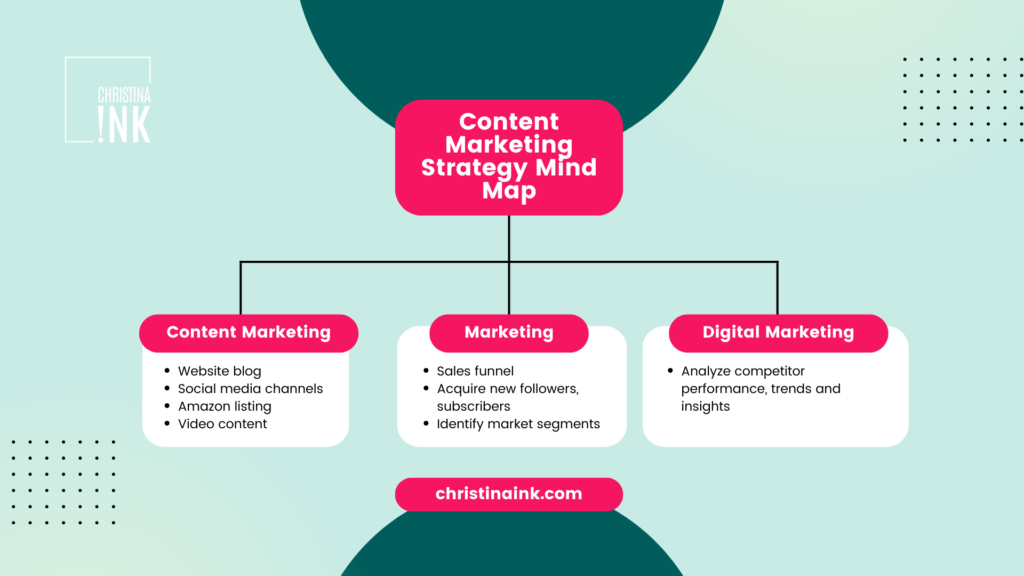If you’re an Amazon seller, you’re probably already creating helpful content geared toward Amazon shoppers.That’s the easy part– your e-commerce business has a general understanding of who it’s helping and what sellers and brands need to learn to advance their e-commerce footprint. But like so many Amazon FBA sellers, your business may have snowballed with the surge of COVID-19. It makes sense that you never really carved out your content marketing strategy. If your content marketing strategy in your Amazon FBA business looks and feels a little upside down, it’s okay.
In this article, we’ll help you navigate everything you need to know about creating an effective content marketing strategy to help you attract and compel the right prospect at the right time.
The Importance of A Content Strategy in Your Amazon Business

By defining a clear narrative through engaging and consistent content, sellers can establish a distinct voice that resonates with their target audience. This consistency extends beyond the Amazon platform, creating a cohesive and recognizable image across various channels. A thoughtful content strategy contributes to enhanced discoverability. As search engines prioritize valuable and relevant content, sellers who strategically incorporate keywords, quality blog posts, and multimedia elements into their off-Amazon content can improve their visibility and attract potential customers outside the confines of the Amazon marketplace.
Social media, a powerful tool for off-Amazon marketing, thrives on compelling content. An effective content strategy ensures that sellers have a steady stream of engaging material to share across social platforms. Whether it’s product highlights, behind-the-scenes glimpses, or customer testimonials, these elements contribute to building a loyal community that transcends the confines of the Amazon platform. A well-defined content strategy plays a pivotal role in nurturing customer relationships. Educational content, insightful blog posts, and interactive social media engagements foster trust and loyalty. This trust extends beyond the immediate transaction, encouraging repeat business and turning customers into brand advocates.
A content strategy for Amazon sellers, improves discoverability, enhances social media engagement, and nurtures lasting customer relationships. As sellers venture into the expansive realm of off-Amazon marketing, a well-executed content strategy stands as a guiding light, ensuring a meaningful and impactful presence in the broader e-commerce landscape.
How to Create A Content Strategy for Your Amazon Business

The Importance of Brand Foundational Messaging in Your Content Marketing Strategy

A well-crafted content strategy functions as a guiding force for your growing online business, enabling you to consistently produce high-performing content across your website, social channels, and Amazon listings. This strategic approach ensures a unified brand voice, fostering trust and recognition among customers. By defining target audiences, creating buyer personas, and segmenting demographics, a content strategy tailors messages to meet the distinct preferences of diverse customer segments. This optimized approach enhances engagement by delivering content that resonates across various platforms.
Your content marketing strategy acknowledges the unique characteristics of each channel. Whether crafting compelling product descriptions for Amazon listings, visually appealing content for social media, or informative blog posts for the website, the strategy adapts content to maximize its impact on specific platforms. By incorporating metrics and analysis into the strategy, you can embrace a data-driven approach to content creation, allowing for continuous refinement and adaptation to evolving market dynamics and customer expectations.
Beyond individual pieces of content, a content strategy contributes to building a cohesive brand narrative. Through a well-crafted story aligned with the brand’s mission, vision, and Unique Selling Proposition (USP), sellers establish a powerful and memorable presence. This narrative serves as a thread connecting the brand with its audience across different touch points. In essence, a content strategy is the linchpin for Amazon sellers navigating the dynamic e-commerce landscape, enabling them to deliver content that resonates, engages, and drives sustained success across diverse platforms.
What are your biggest challenges with creating content. We’ll reply in the comments with some expert tips and tricks.

LIKE THIS ARTICLE?